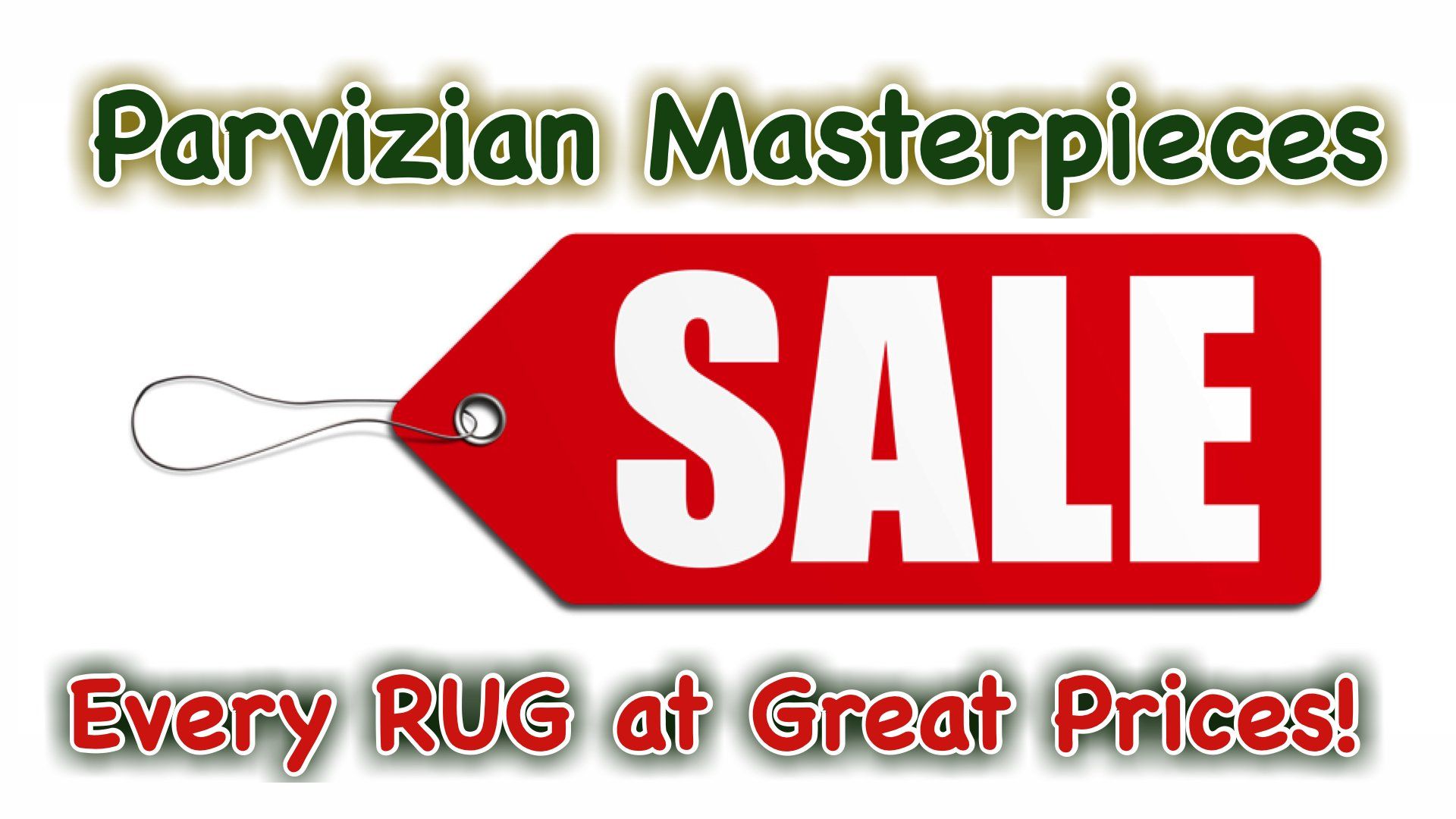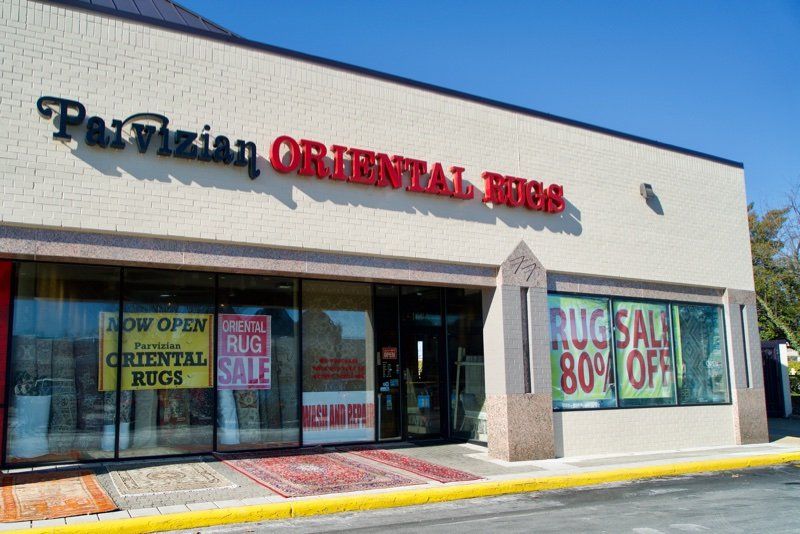Parvizian Masterpieces
Parvizian Masterpieces
Best Rug Deals In Annapolis, MD
169-A Jennifer Road
Annapolis, MD 21401
Phone: 410-266-1180
; Fax: 410-266-1185
Email :
pparvi12@hotmail.com
Hours: Open 10-6 everyday including Saturday except
closed on Wednesdays and Sun 12-5
Parvizian was founded in America almost 30 years ago with a mission to give its customers the highest quality, largest selection available and best value in Oriental rugs.
Over the years, Parvizian has become the name associated with Americas finest Oriental rugs. Whether you are buying an Oriental or Persian rug as an investment or for enjoyment, it is important that you are familiar with the different designs and materials used in production and weaving. Parvizian is the largest and most reputable rug dealer in the United States. We are pleased to help educate and inform you in your purchase today.
Oriental Rugs: Handcrafted works of art, good resale value, trade-in ability, moves with you when you move, made to last a lifetime, greatly enhances room & furniture, organizes space, non-physical room divider, can become a collector's item, an heirloom to pass down generations. Click Here for photos!
Production & Design ~
Only the world's most perfect sheep meet the needs for Parvizian rugs. The age of the sheep and the time of year shearing occurs are important factors. Since the chest wool is the longest and most expensive, it gives the rug's wool excellent strength, luster, resilience, softness and durability found in all Parvizian rugs. Once the wool is sheared, washed and spun, the strands are dyed. Chrome dyes used today are color-fast and come in over 600 colors and in almost all tribal rugs are made with vegetable dyes.
Weaving ~
Then the weaving begins! The handweaving of a rug is a long task, the weaver tying some 10,000 knots! The two primary types of knots used today are Turkish and Persian knots. The Persian knot is said to be advantageous over the Turkish knot as it's less bulky and makes better curves, enabling a finer design. The quality, texture and durability of a rug is determined by the number of knots per square inch. The more knots the finer the details of design and richness in shades and colors.
Rug designs are normally named for the town or region where they originated, such as the Tabriz, which comes from the northwest city of Iran. They can also be named for their use, as in the Prayer Rug used for praying. Other rugs are named for their style of weaving, such as the Kilim or Dhurrie.
History Of Oriental Rugs
The origin of hand-woven oriental rugs is uncertain, but a variety of weavings are alluded to in various ancient writings. Now part of the Hermitage Museum Collection in Leningrad is the oldest surviving piece of carpet, the Pazyryk. The Pazyryk was discovered and excavated in a southern Siberian burial site in 1947-1949 and dates back to about 400-500 B.C.
Throughout the 1980's, the production of Persian-design carpets in other countries, particularly India, China, Pakistan, and Romania has increased significantly. This increase is due to the evolution of the carpet industry. While the tradition and technique of weaving have remained constant, handmade oriental carpets have undergone dramatic change. The weavers have found it more profitable to adapt to new designs and colors to accommodate the Western decorative tastes. Available in a full range of prices, the consumer is able to choose from an ever-wider range of color, qualities and design choice.
How would one describe an Oriental rug? The Oriental Rug Importers Association, Inc. defines an Oriental rug as "...handmade of natural fibers (most commonly wool or silk), with a pile of woven on a warp and weft, with individual character and design made in the Near East, Middle East, Far East or the Balkans."
The oriental hand-woven rug varies in quality. Quality is usually determined by the intricacy of design, the knot density and the wool. The length of its fibers and its springiness defines the quality of wool, and its luster. Wool used in handknotted oriental rugs is either a blend of indigenous and imported wool or originated exclusively from the country of origin. The amount of detail a design
possesses as well as the number of colors needed to execute the pattern, refers to the intricacy of design. The more intricate the design, the more experienced the weaver must be to create the pattern. Finally, knot density and fineness of weave are synonymous. The more knots tied per inch, the more labor-intensive the production and the finer the detail in the design.
How to Buy an Oriental Rug - Buy from an established retailer of oriental rugs with a trusted reputation earned through serving the community. Buy from an establishment whose integrity can be verified through recognized trade associations, or check with your local Better Business Bureau.
Avoid traveling auctions, often held at hotels and airports. They may be here today and gone tomorrow. Your should protect yourself by being able to deal with someone on an ongoing basis.
Beware of "Going-Out-Of-Business" sales which may be promotional schemes, where values are
exaggerated and the quality of the merchandise is mediocre or below average. Also, once out of business there is no one to turn to.
Once you have found a carpet that appeals to you, feel free to question the oriental rug retailer about its quality and suitability for the area you have in mind to use the rug. In fact, you should not buy a carpet until you have thoroughly inspected the actual piece or a representative sample for its quality, color and design. Above all else, you should feel totally comfortable with your selection.
Parvizian Masterpieces will allow you to try a rug at home for a day or so without any obligation of keeping it. They will refund the full purchase price if the rug does not pass its 3-day try out.
The Parvizian Guarantee - If you find the same item advertised anywhere else for a lower price than Parvizian's we will either match the price or even lower the price to make you, the customer, happy!
Parvizian Rugs of Annapolis offers New Rugs - Annapolis MD | Old Rugs - Annapolis MD | Hand-Made Rugs - Annapolis MD | Tradition Rugs - Annapolis MD | Contemporary Rugs - Annapolis MD | Transitional Rugs - Annapolis MD | Persian Rugs - Annapolis MD | Oriental Rugs - Annapolis MD | Indian Rugs - Annapolis MD | Modern Rugs - Annapolis MD | Rug Repair - Annapolis MD | Rug Restoration - Annapolis MD
Parvizian Masterpieces
Best Rug Deals In Annapolis, MD
169-A Jennifer Road
Annapolis, MD 21401
Phone: 410-266-1180
; Fax: 410-266-1185
Email :
pparvi12@hotmail.com
Sponsors have direct access. Call us anytime!
© 2025
All Rights Reserved | AreaGuides.com, LLC.


